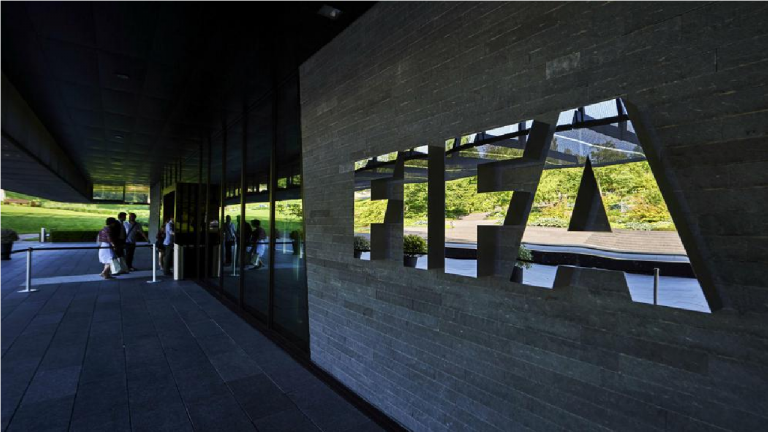
FIFA has partnered with Avalanche to launch a custom Layer-1 blockchain, named the FIFA Blockchain, to enhance its Web3 strategy and fan engagement for its global audience of over five billion. This blockchain, built on Avalanche’s high-performance, scalable infrastructure, will power FIFA Collect, a platform for digital collectibles like NFTs, previously hosted on Algorand and Polygon.
The migration to Avalanche offers improved speed, scalability, and Ethereum Virtual Machine (EVM) compatibility, enabling seamless integration with wallets like MetaMask. The initiative, supported by Modex, aims to deliver unique fan experiences, such as digital collectibles, virtual meet-and-greets, and potentially tokenized ticketing or fan governance in the future. This follows FIFA’s earlier NFT efforts for the 2022 Qatar World Cup and aligns with Avalanche’s recent Avalanche9000 upgrade to attract developers. Specific future plans remain undisclosed.
The partnership between FIFA and Avalanche to launch a custom Layer-1 blockchain (FIFA Blockchain) has significant implications for the sports industry, blockchain adoption, and fan engagement, but it also highlights a growing divide in accessibility, adoption, and perception of Web3 technologies. The FIFA Blockchain, powering platforms like FIFA Collect, enables fans to own, trade, and engage with digital collectibles (e.g., NFTs of iconic moments, player cards, or match highlights). These assets, built on Avalanche’s scalable infrastructure, offer fans new ways to interact with FIFA’s ecosystem, such as virtual meet-and-greets or tokenized rewards.
Register for Tekedia Mini-MBA edition 19 (Feb 9 – May 2, 2026): big discounts for early bird.
Tekedia AI in Business Masterclass opens registrations.
Join Tekedia Capital Syndicate and co-invest in great global startups.
Register for Tekedia AI Lab: From Technical Design to Deployment (next edition begins Jan 24 2026).
While not yet confirmed, the blockchain could support tokenized ticketing for events like the World Cup or fan governance mechanisms (e.g., voting on tournament decisions), creating more interactive and decentralized fan experiences. With FIFA’s audience exceeding five billion, the blockchain could drive mass adoption of Web3 technologies, introducing millions to digital wallets, NFTs, and decentralized applications (dApps).
Blockchain Scalability and Performance
Avalanche’s high throughput (potentially thousands of transactions per second), low latency, and EVM compatibility make it a robust choice for FIFA’s global-scale needs. This ensures a smooth user experience for fans, unlike slower or costlier blockchains. The shift to Avalanche from previous platforms like Algorand and Polygon suggests a strategic move toward a more scalable and interoperable ecosystem, potentially reducing transaction costs and improving accessibility for users.
FIFA can monetize digital collectibles, licensing deals, and potential metaverse integrations, creating new revenue streams beyond traditional ticketing and broadcasting. The partnership with Avalanche and Modex opens doors for further collaborations with Web3 companies, potentially attracting brands to sponsor digital assets or experiences.
Sports organizations like FIFA adopting blockchain technology could normalize Web3 for mainstream audiences, similar to how gaming or social media has driven tech adoption historically. Avalanche’s Avalanche9000 upgrade, which supports custom L1 blockchains like FIFA’s, could draw more developers to build sports-related dApps, fostering innovation in fan engagement tools.
FIFA’s move aligns with other sports organizations exploring Web3, such as the NBA’s Top Shot or Formula 1’s NFT initiatives. This positions FIFA as a forward-thinking leader in sports innovation, potentially strengthening its brand among tech-savvy younger audiences. The adoption of a FIFA Blockchain also underscores and potentially widens several divides in the context of Web3 and sports fandom.
Fans in regions with limited internet access, outdated devices, or low digital literacy may struggle to participate in FIFA’s Web3 initiatives. For example, while Avalanche’s low transaction fees improve accessibility, fans still need compatible devices and wallets (e.g., MetaMask) to engage with FIFA Collect. Despite Avalanche’s cost efficiency, purchasing NFTs or participating in premium experiences may remain out of reach for fans in lower-income regions, creating an economic divide between those who can afford digital collectibles and those who cannot.
Fans unfamiliar with blockchain technology or skeptical of NFTs (due to past scams or environmental concerns) may be reluctant to engage, alienating a portion of FIFA’s fanbase. This is particularly relevant given the backlash against NFTs in some communities. Adoption may be stronger in tech-forward regions like North America, Europe, or Asia, while fans in less tech-savvy regions (e.g., parts of Africa or South America) may lag, creating uneven engagement globally.
The NFT and blockchain space has faced criticism for speculative bubbles, environmental concerns (though Avalanche is relatively energy-efficient), and perceived exclusivity. Some fans may view FIFA’s move as a cash grab rather than a genuine effort to enhance engagement. Traditional fans may prioritize affordable tickets, better stadium experiences, or fair governance over digital collectibles, leading to a divide between tech-enthusiast fans and those focused on physical-world experiences.
Blockchain-based platforms face varying regulations worldwide, from crypto-friendly regions like Dubai to restrictive environments like China. FIFA must navigate these complexities, which could limit access for fans in certain countries. Fans engaging with the FIFA Blockchain will share data via wallets and dApps, raising concerns about privacy and security, particularly in regions with stringent data protection laws (e.g., GDPR in Europe).
While Avalanche is more energy-efficient than proof-of-work blockchains like Ethereum, any blockchain initiative may still face scrutiny from environmentally conscious fans, especially given FIFA’s global visibility and past controversies around sustainability (e.g., Qatar World Cup criticisms).
FIFA’s partnership with Avalanche to launch a Layer-1 blockchain is a bold step toward integrating Web3 into global sports, promising enhanced fan engagement, new revenue streams, and mainstream blockchain adoption. However, it risks deepening divides in access, adoption, and perception, particularly between tech-savvy and traditional fans, affluent and less affluent audiences, and regions with varying technological and regulatory landscapes.



